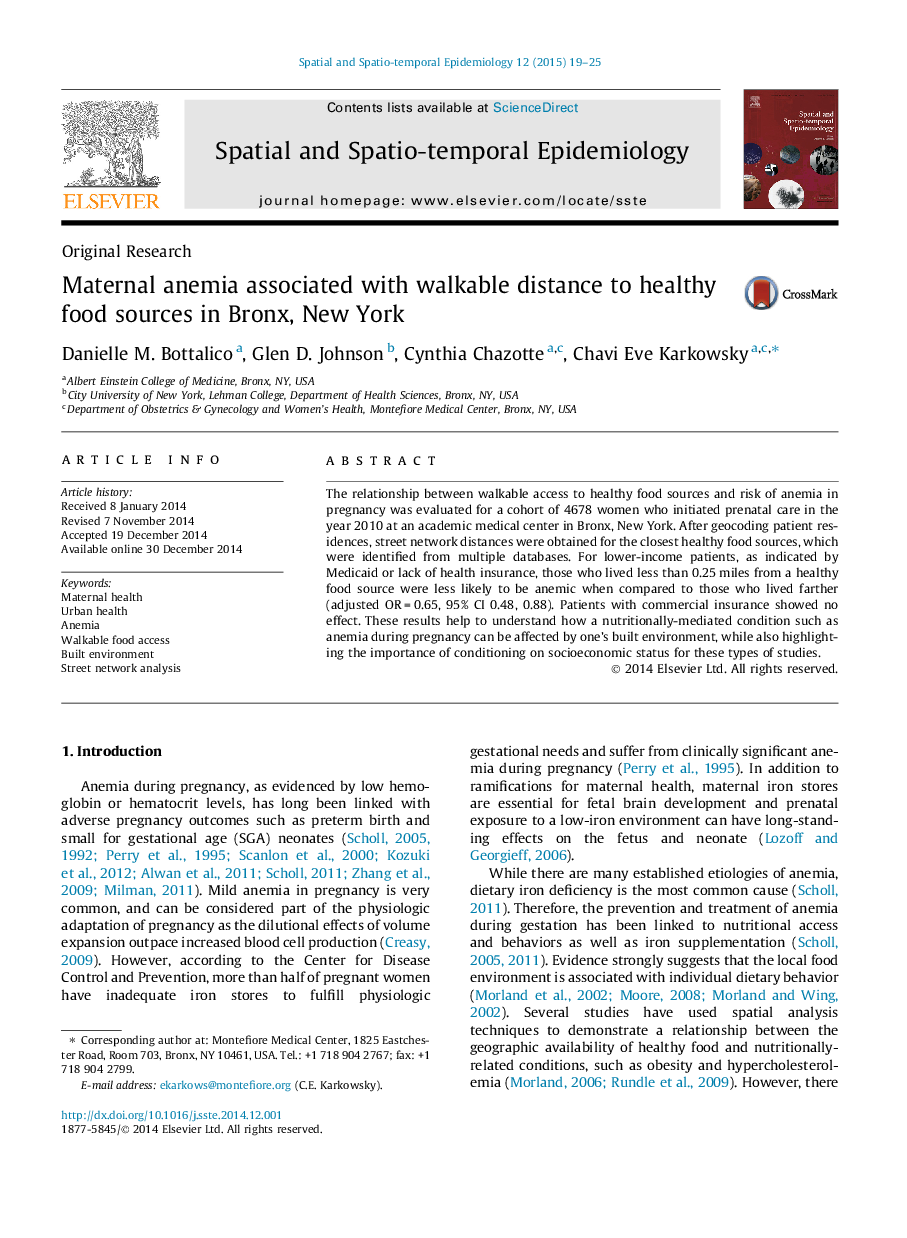| Article ID | Journal | Published Year | Pages | File Type |
|---|---|---|---|---|
| 1064323 | Spatial and Spatio-temporal Epidemiology | 2015 | 7 Pages |
Abstract
The relationship between walkable access to healthy food sources and risk of anemia in pregnancy was evaluated for a cohort of 4678 women who initiated prenatal care in the year 2010 at an academic medical center in Bronx, New York. After geocoding patient residences, street network distances were obtained for the closest healthy food sources, which were identified from multiple databases. For lower-income patients, as indicated by Medicaid or lack of health insurance, those who lived less than 0.25Â miles from a healthy food source were less likely to be anemic when compared to those who lived farther (adjusted ORÂ =Â 0.65, 95% CI 0.48, 0.88). Patients with commercial insurance showed no effect. These results help to understand how a nutritionally-mediated condition such as anemia during pregnancy can be affected by one's built environment, while also highlighting the importance of conditioning on socioeconomic status for these types of studies.
Related Topics
Health Sciences
Medicine and Dentistry
Public Health and Health Policy
Authors
Danielle M. Bottalico, Glen D. Johnson, Cynthia Chazotte, Chavi Eve Karkowsky,
